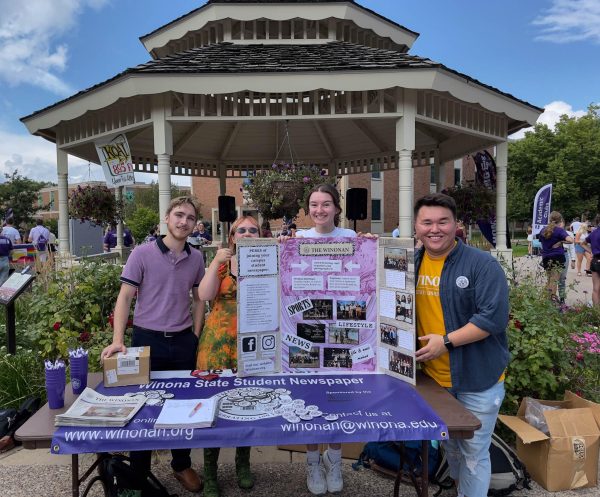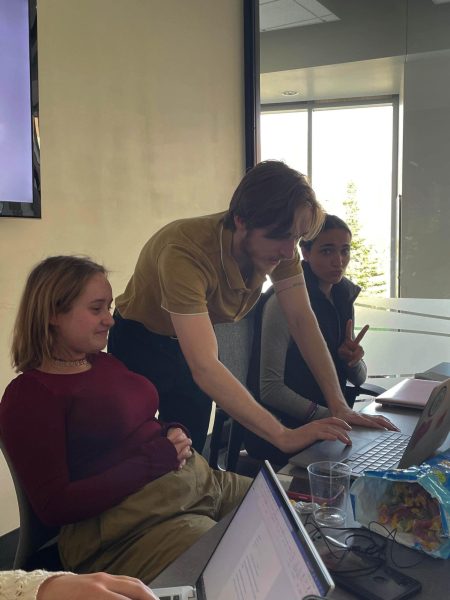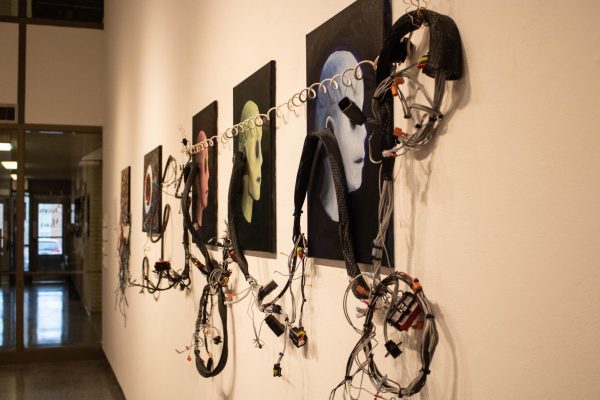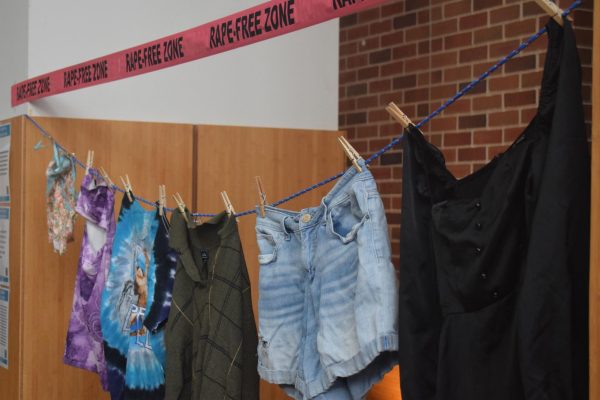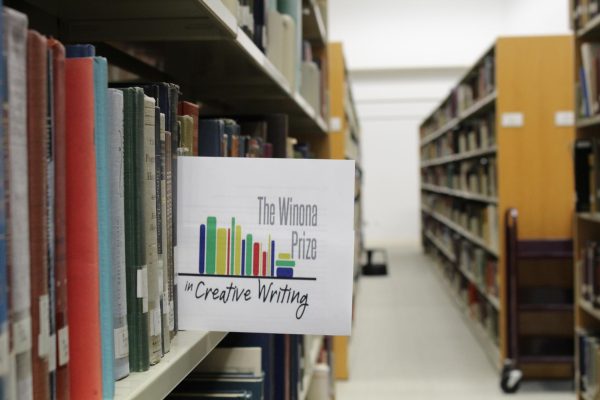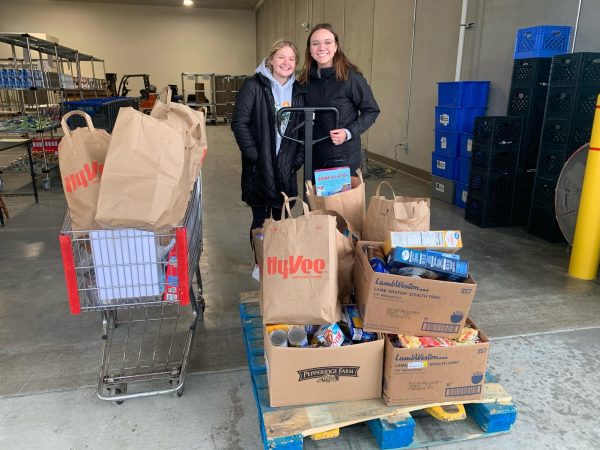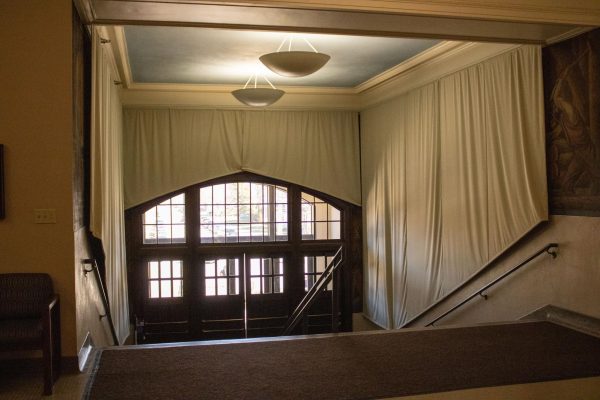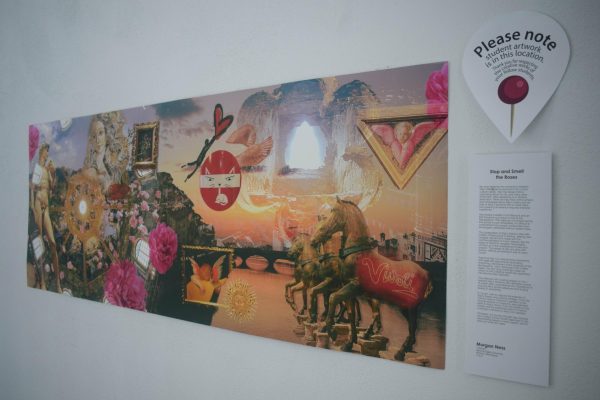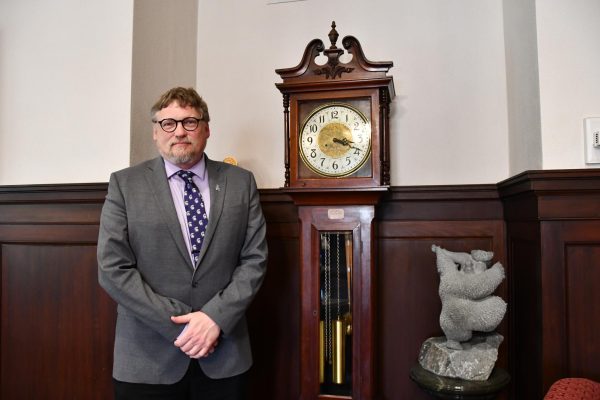Lake Park fosters distanced activity during pandemic
November 4, 2020
Tucked between bluffs and an island city, a heart beats. A pulse of movement, a whir of pedals and a chatter of friendly dialogue blends with the sounds of leaves softly stirring. For an afternoon, one can forget about the rest of the world–and the pandemic.
Winona, Minnesota’s Lake Park is five miles of blacktop stretching around two bodies of water, but to so many Winona residents, it feels like home. The impacts of COVID-19 have only made this more clear.
The town of Winona is consistently ranked among the most beautiful in the state. Lake Park is what Winona assistant city manager and community services director Chad Ubl described as “the front door”, opening the community to visitors and building that sense of community through the activities it offers.
Third-year track and cross-country athlete Alexis Fenrick said she values the lake.
“It‘s something you‘re not gonna find anywhere else, what makes Winona, Winona,” Fenrick said.
The history of Lake Park dates back to the Indigenous village of Keoxah, when the children of Chief Wapasha played on its shores. After colonization, what we know as Lake Park began in 1900 with a public campaign of land acquisition. After all the property had been purchased, donations from the affluent community members of then-lumber boomtown Winona rolled in, totaling $100,000 (about $3,000,000 today with inflation).
Originally a marsh, in order to become a lake, Lake Winona required significant dredging to become the park we see today. Much of the greenspace of the park and industrial areas in Winona were built from sediment dredged from the lake deposited from its Gilmore Creek inlet. The Winona State University football field is built atop dredged fill from the lake. Dredging helps keep the lake from returning to the marshland it once was, and controls vegetation that can clog the surface of the lake, promoting fish populations.
Ubl says he believes the use of Lake Park has increased over time.
“It‘s certainly grown over the years in the community. The community certainly has embraced that development as well,” Ubl said.
In 1999, the city levied nearly three million dollars in taxes to dredge the lake again, creating a space where the local mall occupies now. Ubl said the community engagement has been high when it comes to developing Lake Park.
“The community has always stepped up for Lake Park, even in passing referendums or bonding to dredge the lake,” Ubl said.
But the history of Lake Park is not just what has been taken from the lake, but also what the lake has given back.
When COVID hit, the value of the park became abundantly clear to many in Winona. Ubl said people’s need for recreation skyrocketed during the pandemic.
“COVID hasn‘t slowed us down in the least. We‘ve definitely seen higher usage of our park facilities,” Ubl said
Therapeutic recreation professor Dr. Aybar Begum-Damali knows firsthand the vital role the park plays in health during COVID.
“Lake Park can play a vital role in our adjustment to [the pandemic]. The design of the park is so successful; it offers so many opportunities or possibilities for leisure,” Aybar-Damali said.
Ubl said the park helps create resilience to cope with COVID.
“All the research says that when you do the exercise or you get outdoors [there are many good things] that can do for your mental health. I think that the park provides some of that resiliency,” Ubl said.
In a blend of past and present, drive-in concerts and shows have been held in the bandshell as a distanced venue in response to COVID. To many, this is a unique answer to the problems of today that uses the venues of a past century. The drive-in events have been a hit, frequently filling to capacity for vehicles but still remaining open for walk-up attendees. Benches are reserved for households and attendees are encouraged to wear masks and sanitize.
The lake offers year-round activity: in the summer, people can rent a boat, play 18 holes of disk golf and catch a concert in the same park on the same day. Spring visitors can picnic, play tennis and go fishing. Fall brings bird watching, hammocking and the crunch of the fall leaves. The bustle does not stop even in the winter. The path is shoveled of snow, and even fat tire cyclists still make the rounds, braving freezing temperatures. The Lake Lodge rents out ice skates and clears the frozen surface of the lake for broomball and ice skating. Ice fishing abounds on the lake and the ice is dotted with ice fishing shacks and vehicles.
Fourth-year student and track and cross-country athlete Katie Lorenz detailed the unique variety of activities she believes Lake Park offers to residents.
“We can paddleboard and kayak and I think you don’t get that in a lot of other cities or college towns” Lorenz said.
Fourth-year biochemistry and political science student Natalie Nowatzke also participates in track and cross-country. Nowatzke said the Lake Park is the perfect venue for year-round practice.
“It’s really nice for us, especially in the winter, because they keep it so plowed and nice for us, when even the roads we can’t run on, we can run here,” Nowatzke said.
The park is a de facto training area for both the Winona State cross country and track teams. Cross country coach John Hibsman said the park is a multifaceted area for training unique to Winona.
“Basically, it’s like our track,” Hibsman said. “Being an outsider, and bringing recruits on campus, they love the two lakes. Winona is so lucky to have a big park like this. We use the bike path, but I also use the grass areas for training. This park’s just awesome.”
Nowatzke says even hard practices are special at Lake Park.
“[There are] some tough workouts, but I think that being here and being with our team makes the worst never too bad.”





























































